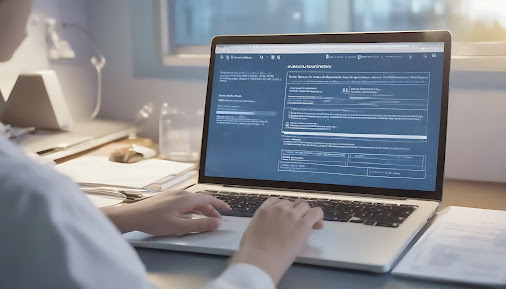The Future of Pathology Lab Software: Navigating Trends in Laboratory and EMR Solutions
Pathology lab software stands at the forefront of technological advancements. This software not only streamlines the diagnostic process but also plays a crucial role in ensuring accurate and efficient healthcare outcomes. As we navigate the future, it becomes imperative for pathology labs to embrace new trends that redefine the way they operate.
Evolution of Pathology Lab Software
Understanding the trajectory of pathology lab software requires a glance into its historical evolution. From manual record-keeping to the integration of sophisticated technologies, the journey has been transformative. Technological advancements have become the driving force behind the paradigm shift, revolutionizing the way labs function.
Current Challenges in Pathology Labs
Despite the progress, pathology labs face challenges in data management and seamless integration with Electronic Medical Records (EMR) systems. This necessitates a closer look at the existing obstacles that need innovative solutions.
Key Features of Modern Pathology Lab Software
Modern pathology lab software boasts integration with diagnostic equipment, introducing automation and AI-powered analytics. These features not only enhance the speed of diagnostics but also contribute to a higher level of precision.
Enhancing Accuracy with AI in Pathology
The incorporation of machine learning algorithms in diagnostics has significantly reduced the margin of error in pathology reports. The marriage of artificial intelligence with pathology lab software is proving to be a game-changer in the quest for accuracy.
Interoperability with EMR Software
To create a seamless healthcare ecosystem, interoperability between pathology lab software and EMR systems is crucial. This ensures that patient data flows seamlessly, facilitating better-informed medical decisions.
Cloud-Based Solutions for Pathology Labs
Cloud-based solutions offer flexibility and accessibility, allowing healthcare professionals to access data from anywhere. However, concerns regarding data security must be adequately addressed to fully realize the benefits of this approach.
Improving Efficiency Through Mobile Applications
The integration of mobile applications not only engages patients but also provides real-time updates for healthcare professionals. This fosters a dynamic and responsive healthcare environment.
Data Security and Compliance
Given the sensitivity of patient data, ensuring compliance with regulations such as HIPAA is paramount. Implementing robust security measures becomes non-negotiable to maintain the trust and privacy of patients.
Adopting Blockchain in Pathology Labs
The implementation of blockchain technology ensures data integrity in pathology reports. This innovation enhances transparency in diagnostic processes, contributing to a more accountable healthcare system.
User-Friendly Interfaces for Healthcare Professionals
The usability of pathology lab software is as crucial as its features. User-friendly interfaces, coupled with effective training and onboarding strategies, are essential for seamless integration into healthcare workflows.
Cost-Effectiveness of Pathology Lab Software
While investing in advanced software may seem daunting, the long-term savings and improved efficiency justify the cost. Labs of different sizes should carefully evaluate the investment considerations to make informed decisions.
Trends in Telepathology
Telepathology introduces the concept of remote diagnostics and consultations. Overcoming challenges in remote pathology is essential for the widespread adoption of this trend.
Emerging Technologies Impacting Pathology Lab Software
Technologies such as the Internet of Things (IoT) and Augmented Reality (AR) applications are making their mark in pathology. These innovations promise to further enhance the capabilities of pathology lab software.
Future Outlook and Innovations
As we peer into the future, predictions for the next decade include continuous evolution in response to healthcare needs. Pathology lab software will play a pivotal role in shaping the healthcare landscape.
Conclusion
The future of pathology lab software is dynamic and promising, with continuous innovations reshaping the way healthcare operates. Embracing these trends is not just a necessity but a strategic move toward providing more accurate, efficient, and patient-centric care.
FAQs:
Is pathology lab software only for large healthcare institutions?
No, pathology lab software is available for labs of all sizes, offering scalable solutions tailored to specific needs.
How does AI contribute to accuracy in pathology reports?
AI analyzes data patterns, assisting in more precise diagnostics and reducing the likelihood of human error.
Are cloud-based solutions secure for storing sensitive patient data?
Yes, with proper security measures in place, cloud-based solutions can be as secure as on-premises alternatives.
What is telepathology, and how does it benefit healthcare?
Telepathology involves remote diagnostics and consultations, improving access to pathology expertise in diverse locations.
Can blockchain technology really enhance transparency in diagnostics?
Yes, blockchain ensures data integrity, providing an immutable and transparent record of pathology reports.
Suggestion Articles:
LIMS Software Solutions to Manage Laboratory Information, Data, Instruments, and Workflows
The Benefits of Cloud-Based LIMS: Revolutionizing Laboratory Management
Choosing the Best EMR Software for Seamless Healthcare Operations
Addressing Staffing Shortages: How Lab Software is Transforming Medical Labs
How to Choose the Best LIMS Software
The Intersection of Artificial Intelligence and Laboratory Operations
Indian Healthcare: A Business Approach with LIMS, Digital Healthcare, and More
A Professional's Evaluation of Electronic Medical Records in India
How to Choose the Best Dental Practice Management Software: A Comprehensive Guide
The Power of LIMS Software in Digital Healthcare
The Role of Lab Information Management Systems in Modern Healthcare | Exploring LIMS
How Pathology Lab Software Safeguards Sensitive Information
Transforming Laboratory Operations: Choosing the Right Cloud-Based Service

.png)





